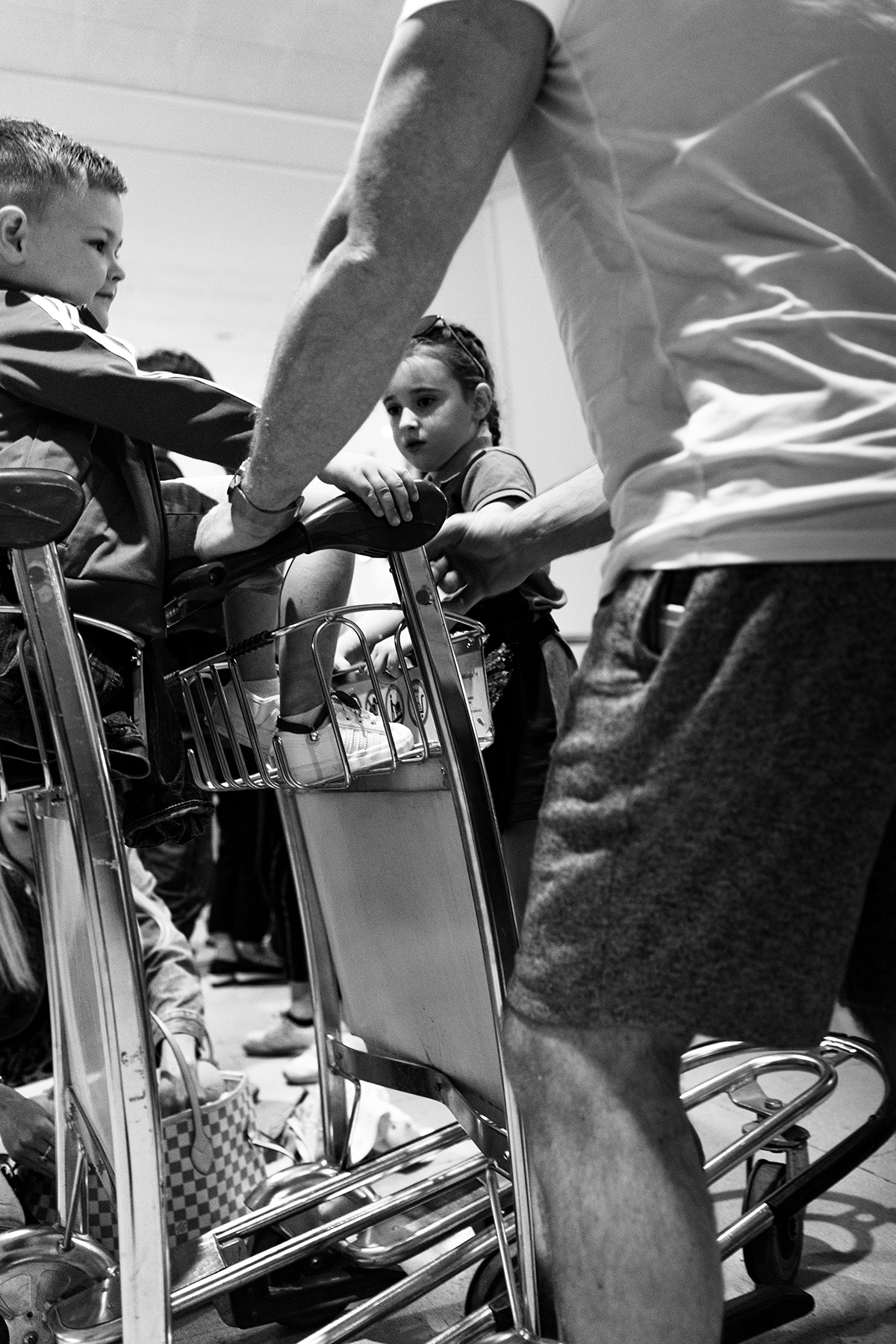What Is The Mile High Club? Exploring The Secrets And Facts
The Mile High Club is a term that has sparked curiosity and debate for decades. It refers to an exclusive "club" of individuals who have engaged in sexual activity at an altitude of 1,000 meters (3,280 feet) or higher, typically on an airplane. This concept has become a popular topic in both casual conversations and media discussions. But what exactly does it mean to be part of this so-called club, and why does it continue to intrigue people worldwide?
From its origins to its cultural significance, understanding the Mile High Club requires delving into various aspects of aviation, human behavior, and social norms. While some view it as a thrilling adventure, others see it as a risky or inappropriate act. This article will explore everything you need to know about the Mile High Club, including its history, rules, risks, and controversies.
Whether you're simply curious about this phenomenon or want to gain deeper insights into its implications, this article aims to provide comprehensive information backed by credible sources. Let’s dive in and uncover the truth behind the Mile High Club.
Read also:How Many Teams Are In The Nfl Your Ultimate Guide To American Footballs League Landscape
Table of Contents
- The Origin of the Mile High Club
- What Exactly is the Mile High Club?
- Who Can Join the Mile High Club?
- Unwritten Rules of the Mile High Club
- Risks and Safety Concerns
- Statistics and Popularity
- How Airlines Handle the Mile High Club
- Controversies Surrounding the Mile High Club
- Legal Implications
- Conclusion and Final Thoughts
The Origin of the Mile High Club
The Mile High Club is believed to have originated in the early days of commercial aviation, though its exact beginnings remain shrouded in mystery. Some historians suggest that the term was first used in the 1940s during World War II by pilots and crew members who engaged in intimate activities while flying at high altitudes. Others argue that it gained popularity in the 1960s and 1970s, when air travel became more accessible to the general public.
Early References to the Mile High Club
One of the earliest documented references to the Mile High Club appeared in a 1958 article in the Los Angeles Times, which mentioned a group of frequent flyers who claimed to have achieved this unique milestone. Since then, the concept has been immortalized in popular culture, appearing in movies, books, and even jokes.
Regardless of its origins, the Mile High Club has become a symbol of adventure, spontaneity, and breaking boundaries. However, its appeal is not without controversy, as we will explore in later sections.
What Exactly is the Mile High Club?
At its core, the Mile High Club refers to the act of engaging in sexual activity while on an airplane, specifically at an altitude of 1,000 meters or higher. While there is no official membership or registration process, individuals who achieve this feat are often said to have "joined" the club. The concept has gained popularity due to its novelty and the thrill of doing something unconventional in a confined space.
Common Misconceptions
- Many people believe that joining the Mile High Club requires a specific altitude or location, but there are no strict guidelines.
- Others assume that it involves public displays of affection, but in reality, discretion is key to avoiding unwanted attention or legal issues.
- Some mistakenly think that only first-class passengers can participate, but the truth is that anyone, regardless of their seat class, can attempt to join the club.
Who Can Join the Mile High Club?
Technically, anyone who meets the altitude requirement and engages in the act can claim membership in the Mile High Club. However, practical considerations such as privacy, safety, and airline regulations often limit participation. Passengers in premium cabins or private jets may find it easier to achieve this milestone due to increased privacy and comfort.
Factors That Influence Membership
- Privacy: First-class or business-class cabins offer more privacy than economy sections, making it easier for couples to engage in intimate activities.
- Timing: Choosing flights with fewer passengers or during off-peak hours can reduce the likelihood of being noticed by others.
- Discretion: Maintaining a low profile is essential to avoid drawing attention from fellow passengers or crew members.
Unwritten Rules of the Mile High Club
While there are no formal rules governing the Mile High Club, certain unwritten guidelines exist to ensure discretion and safety. These rules are based on common sense and respect for fellow passengers and airline staff.
Read also:American Idol Season 3 Finalists A Comprehensive Guide To The Stars Who Shaped The Music Industry
Key Guidelines to Follow
- Avoid public displays of affection that could make others uncomfortable.
- Respect the privacy and comfort of other passengers.
- Follow all airline rules and regulations, including seatbelt signs and cabin crew instructions.
- Use discretion when choosing your moment, ensuring that you do not disturb the flight experience for others.
By adhering to these guidelines, participants can minimize the risk of negative consequences and enjoy a more pleasant experience.
Risks and Safety Concerns
While the idea of joining the Mile High Club may seem exciting, it is important to consider the potential risks involved. These risks include legal, health, and social implications that could arise from engaging in intimate activities on an airplane.
Legal and Health Risks
- Legal Issues: Many airlines have strict policies against public indecency, and engaging in sexual activity on a plane could result in fines or even criminal charges.
- Health Concerns: The confined space and lack of oxygen at high altitudes can pose health risks, especially for individuals with pre-existing medical conditions.
- Social Repercussions: Being caught in the act could lead to embarrassment, negative publicity, or damage to personal relationships.
Before attempting to join the Mile High Club, it is crucial to weigh these risks and make an informed decision.
Statistics and Popularity
Despite its allure, the Mile High Club remains a relatively rare occurrence. According to a survey conducted by Travelocity, only 2% of respondents admitted to having joined the Mile High Club. However, the same survey found that 14% of travelers had witnessed or heard about such activities on a plane.
Factors Influencing Popularity
- Long Flights: Passengers on long-haul flights are more likely to attempt joining the Mile High Club due to the extended duration and increased privacy opportunities.
- Premium Cabins: Travelers in first-class or business-class cabins report higher rates of participation, likely due to better privacy and comfort.
- Cultural Differences: Attitudes toward public intimacy vary across cultures, affecting the likelihood of individuals engaging in such activities.
How Airlines Handle the Mile High Club
Airlines have differing approaches to dealing with the Mile High Club. While some airlines choose to ignore the phenomenon, others have implemented strict policies to prevent it. These policies are designed to maintain a comfortable and respectful environment for all passengers.
Airline Policies on Intimate Activities
- Most airlines prohibit public displays of affection and reserve the right to intervene if passengers are causing discomfort to others.
- Some airlines have introduced "couple-friendly" cabins or private suites on long-haul flights, offering a more discreet option for travelers seeking intimacy.
- Cabin crew are trained to handle sensitive situations with professionalism and discretion, ensuring that all passengers feel safe and respected.
Controversies Surrounding the Mile High Club
The Mile High Club is not without its share of controversies. Critics argue that it promotes inappropriate behavior in public spaces and undermines the dignity of air travel. Proponents, on the other hand, view it as a harmless way to celebrate the thrill of adventure and spontaneity.
Common Criticisms
- Public Decency: Many people believe that engaging in sexual activity on a plane is disrespectful to fellow passengers and crew members.
- Safety Concerns: Critics argue that the Mile High Club distracts passengers and crew from focusing on safety during the flight.
- Legal Implications: The potential for legal consequences has led some to question the wisdom of pursuing this activity.
Legal Implications
Joining the Mile High Club can have serious legal consequences, depending on the jurisdiction and airline policies. In many countries, public indecency laws prohibit sexual activity in public spaces, including airplanes. Violators may face fines, criminal charges, or even deportation in extreme cases.
Legal Precedents
- In 2010, a couple was fined $1,000 each for engaging in sexual activity on a flight from New York to London.
- In 2015, a passenger was removed from a flight and arrested for public indecency after being caught in the act on a domestic U.S. flight.
- Airline policies vary, but most carriers reserve the right to remove passengers who violate their codes of conduct.
Conclusion and Final Thoughts
The Mile High Club remains a fascinating and controversial phenomenon that continues to capture the imagination of travelers worldwide. While its allure lies in the thrill of breaking boundaries and experiencing something unique, it is important to consider the potential risks and consequences before attempting to join. By understanding the unwritten rules, legal implications, and social norms surrounding the Mile High Club, individuals can make informed decisions about their actions.
We invite you to share your thoughts and experiences in the comments below. Have you ever considered joining the Mile High Club, or do you have any questions about this topic? Don’t forget to explore other articles on our site for more insights into the world of travel and aviation. Thank you for reading!


